Abstract
The growth and tissue water, K+, Na+, Cl−, proline and glycinebetaine contents of the shoots and roots of two Chenopodiaceae, Atriplex spongiosa and Suaeda monoica have been measured over a range of external NaCl salinities. Both species showed some fresh weight response to low salinity mainly due to increased succulence. S. monoica showed both a greater increase in succulence (at low salinities) and tolerance of high salinities than A. spongiosa. Both species had high affinities for Na+ and maintained constant but low shoot K+ contents with increasing salinity. These trends were more marked with S. monoica in which Na+ stimulated the accumulation of K+ in roots. An association between high leaf Na+ accumulation, high osmotic pressure, succulence, and a positive growth response at low salinities was noted. Proline accumulation was observed in shoot tissues with suboptimal water contents. High glycinebetaine contents were found in the shoots of both species. These correlated closely with the sap osmotic pressure and it is suggested that glycinebetaine is the major cytoplasmic osmoticum (with K+ salts) in these species at high salinities. Na+ salts may be preferentially utilized as vacuolar osmotica.
Full text
PDF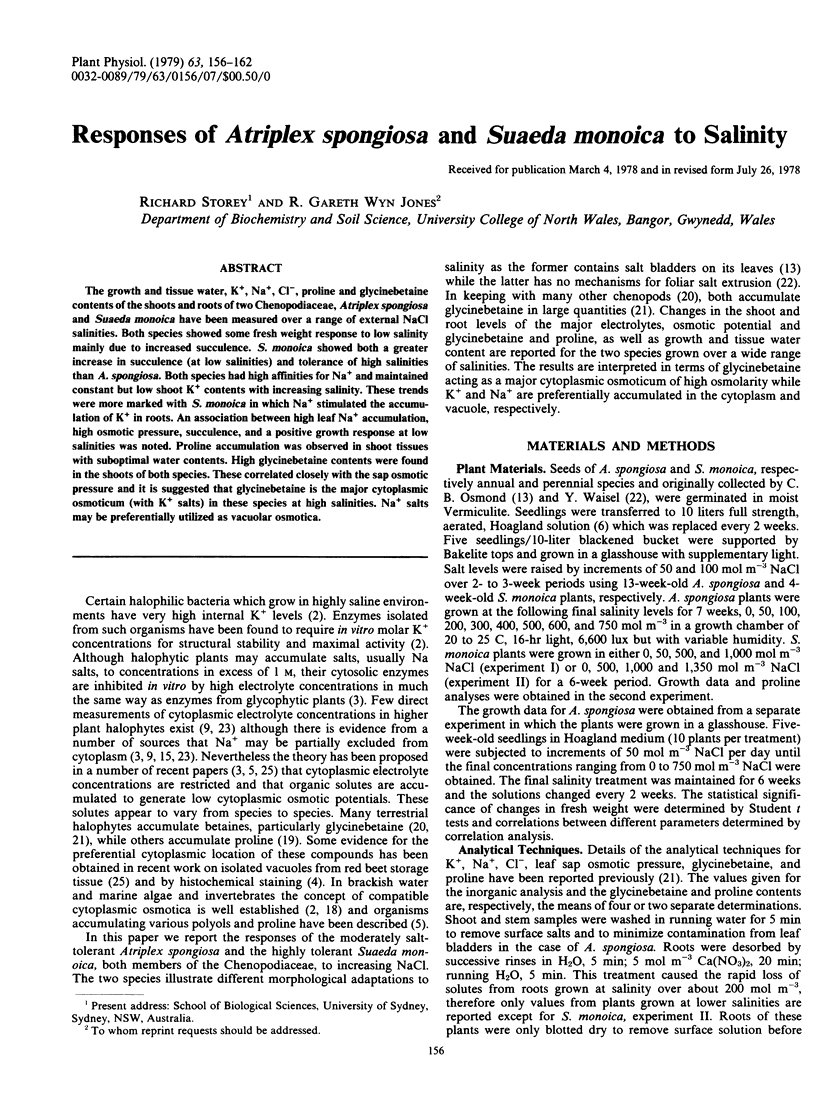
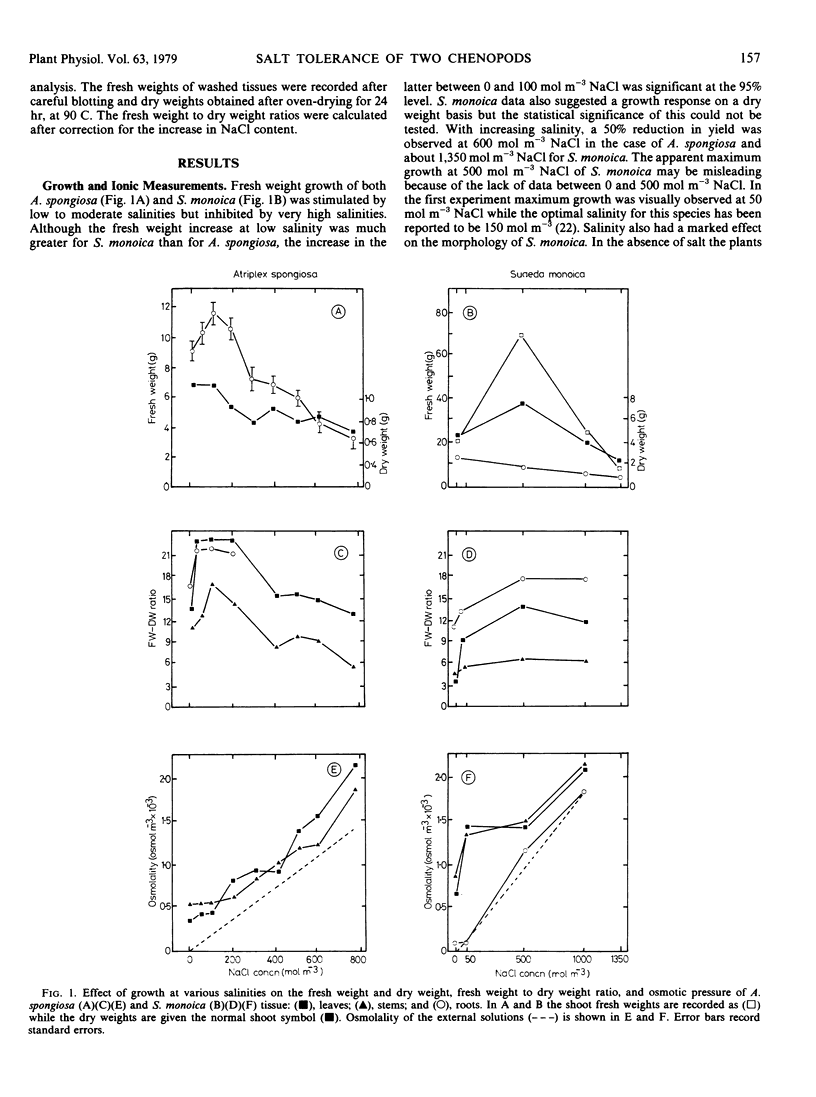
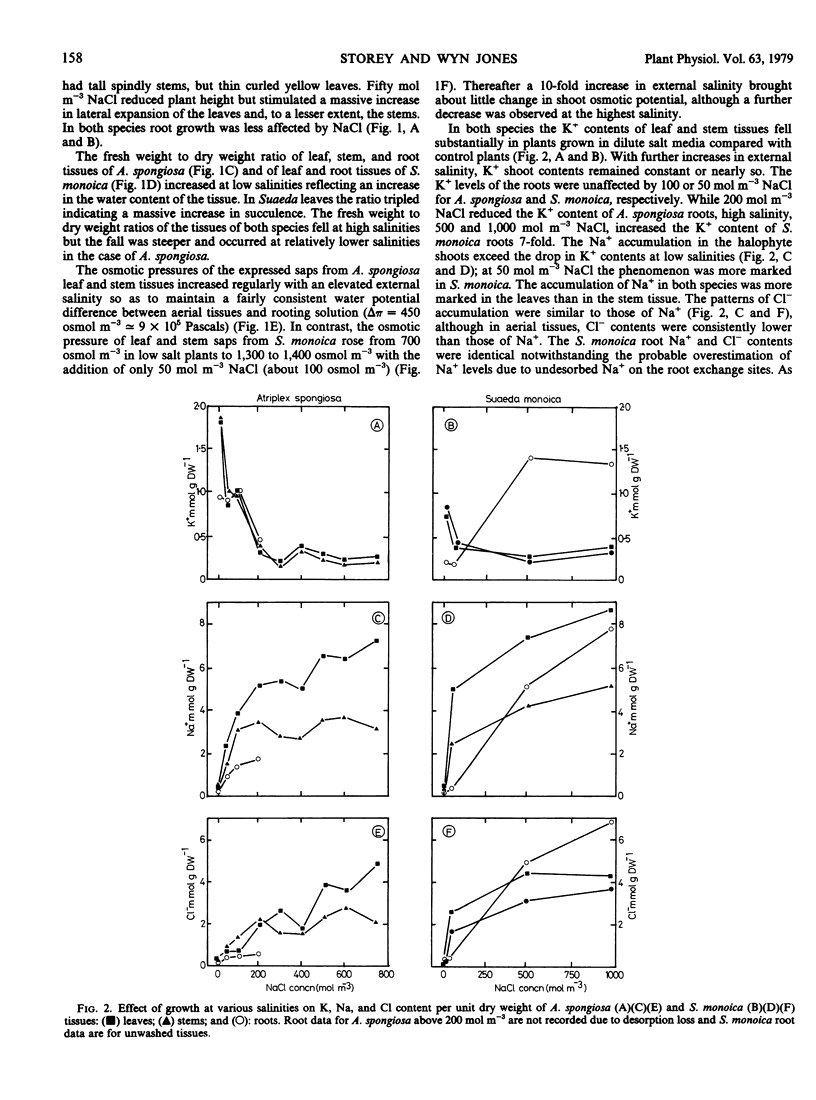
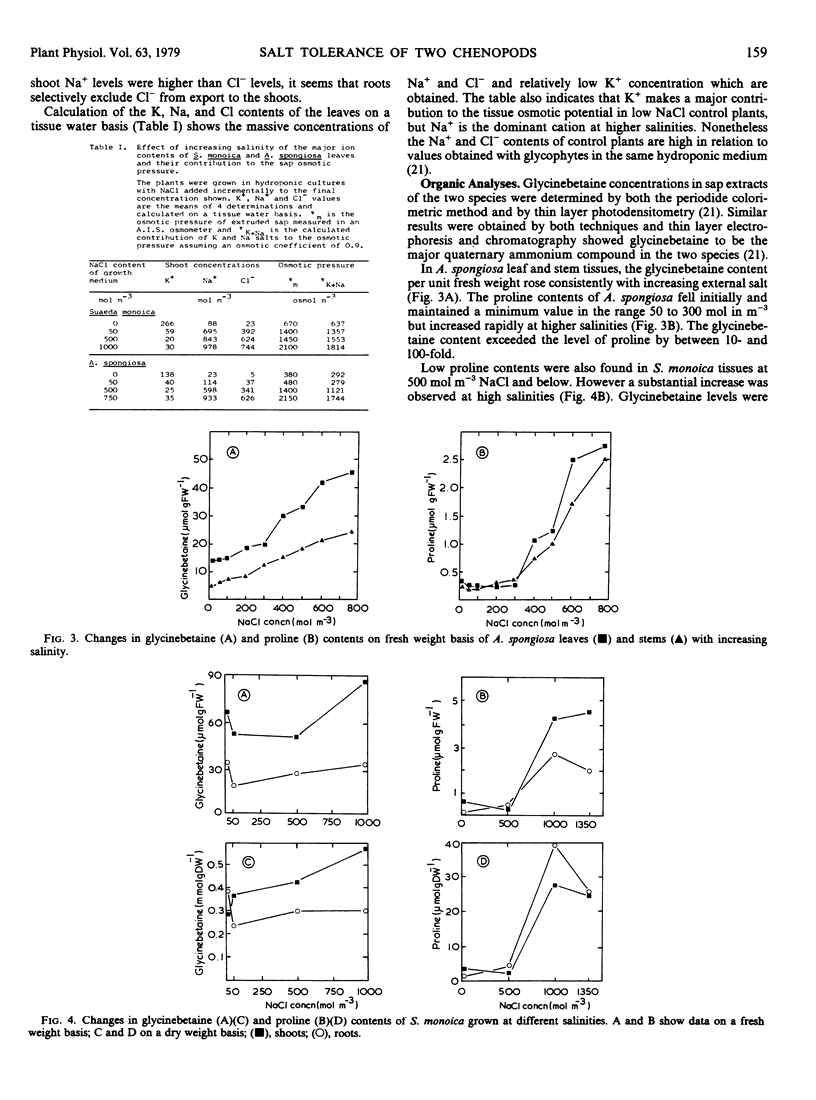
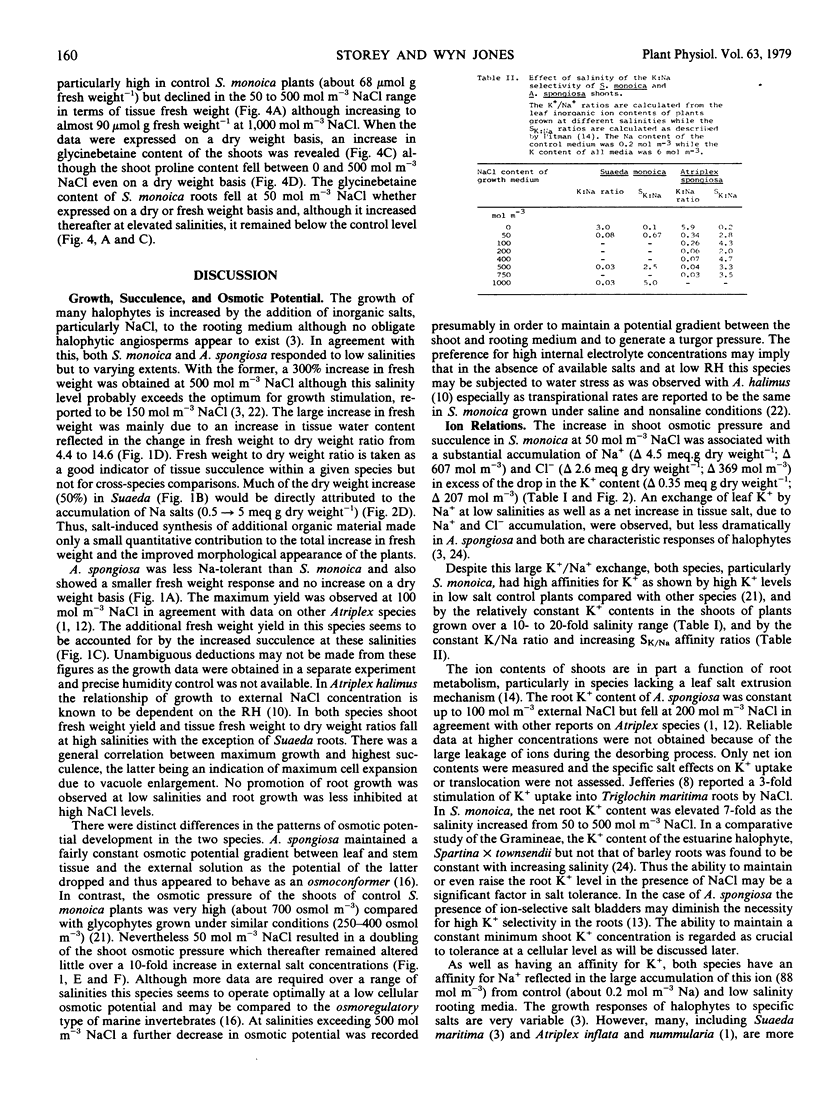
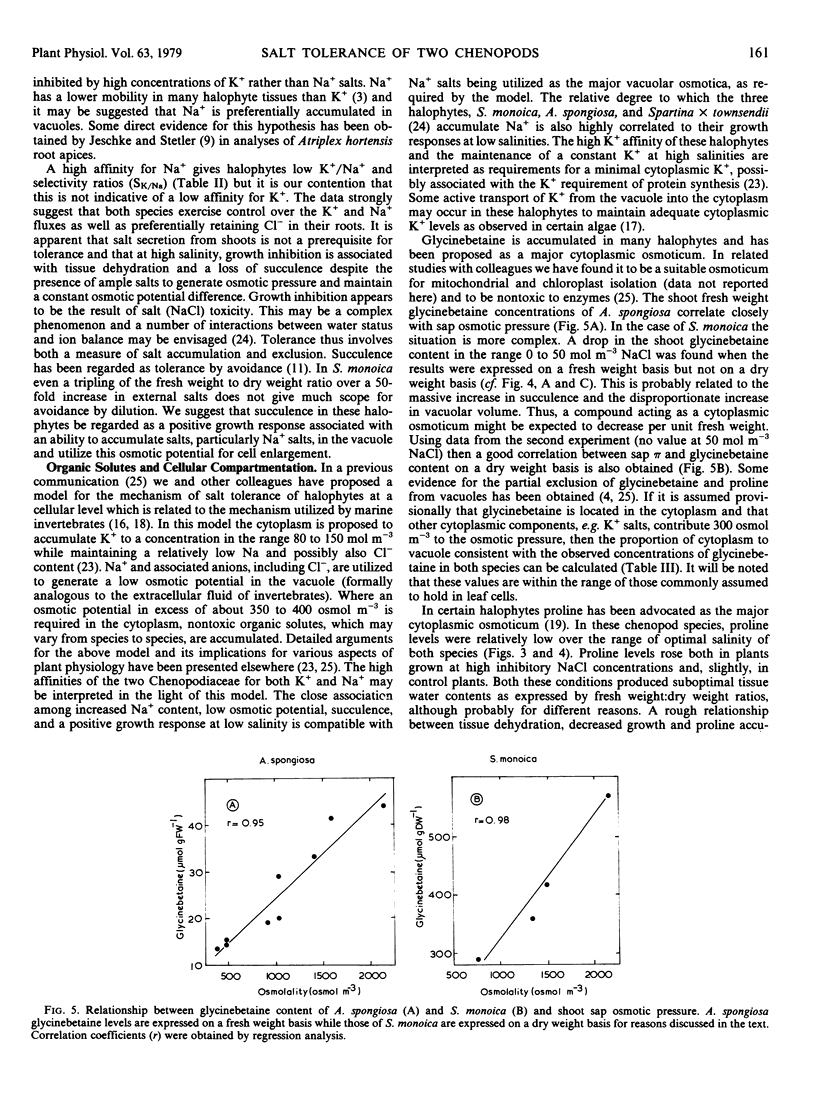
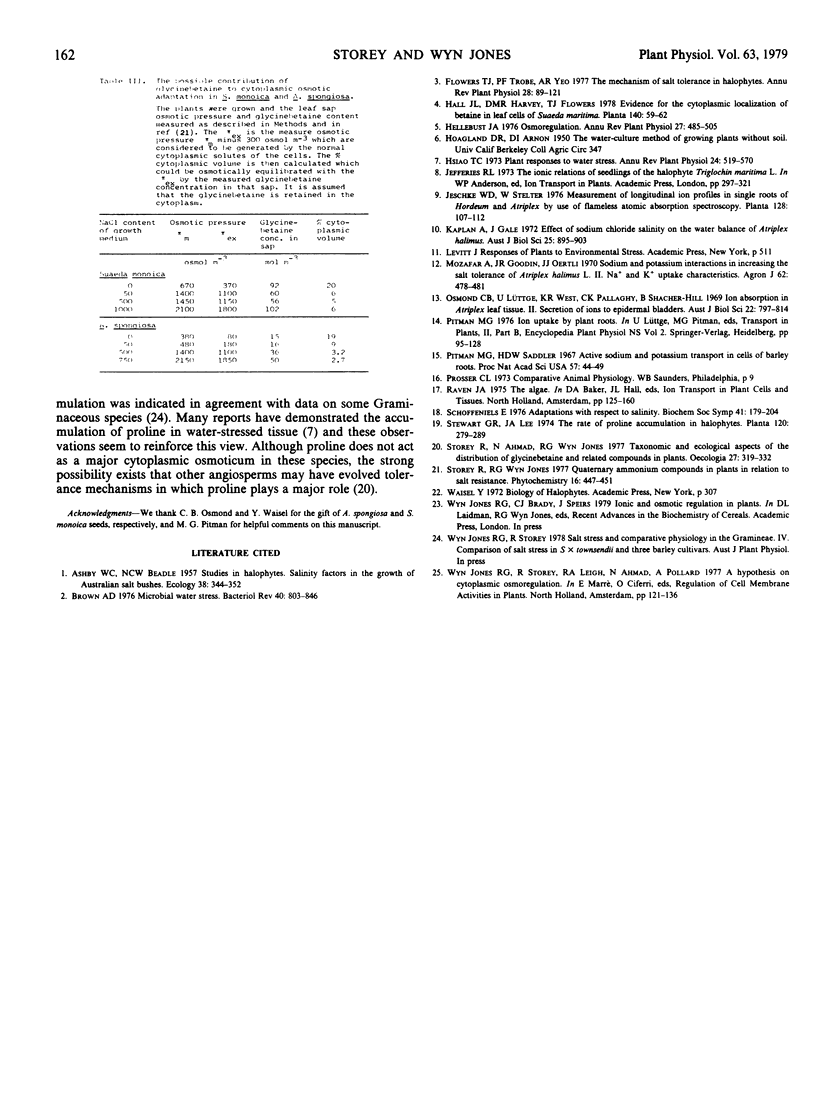
Selected References
These references are in PubMed. This may not be the complete list of references from this article.
- Brown A. D. Microbial water stress. Bacteriol Rev. 1976 Dec;40(4):803–846. doi: 10.1128/br.40.4.803-846.1976. [DOI] [PMC free article] [PubMed] [Google Scholar]
- Pitman M. G., Saddler H. D. Active sodium and potassium transport in cells of barley roots. Proc Natl Acad Sci U S A. 1967 Jan;57(1):44–49. doi: 10.1073/pnas.57.1.44. [DOI] [PMC free article] [PubMed] [Google Scholar]
- Schoffeniels E. Adaptations with respect to salinity. Biochem Soc Symp. 1976;(41):179–204. [PubMed] [Google Scholar]


